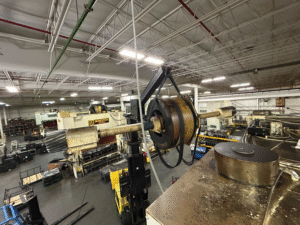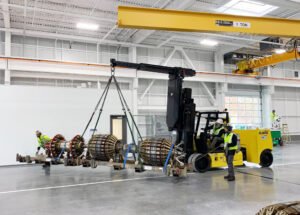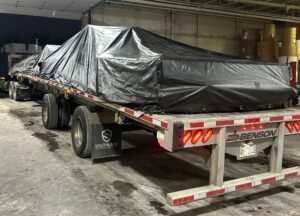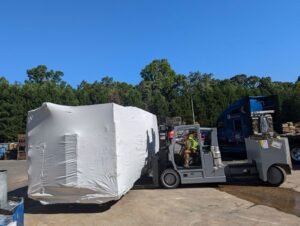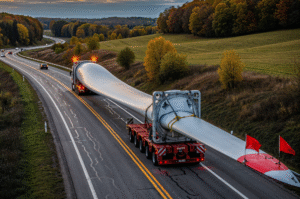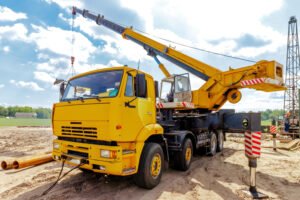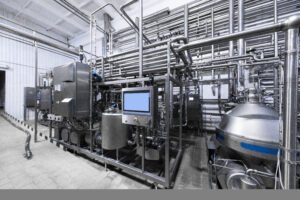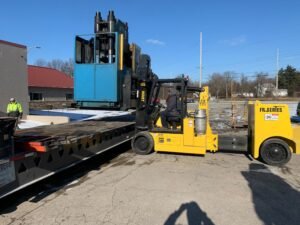Lathe machines are indispensable in manufacturing industries, playing a pivotal role in machining operations. But when it comes to routine maintenance, factory upgrades, or relocation, a full or partial lathe teardown becomes essential. Whether you’re moving a manual lathe across the shop or relocating a massive CNC lathe across states, proper disassembly ensures safety, protection of components, and streamlined reassembly.
In this guide, we will explore everything you need to know about lathe teardown—from planning, tools, safety protocols, disassembly steps, to packaging and reinstallation— to serve industrial professionals, plant managers, and equipment movers.
What Is Lathe Teardown?
Lathe teardown refers to the disassembly of a lathe machine—either partially or completely—into manageable components. This process is commonly carried out for:
-
Routine maintenance or repair
-
Deep cleaning or part replacement
-
Moving the machine to another location
-
Selling, upgrading, or storing the equipment
Teardown minimizes risks to sensitive components during relocation and enables access to internal parts for maintenance.
When Is Lathe Teardown Necessary?
Teardown isn’t always required, but it becomes critical under several conditions:
-
Relocation: Lathes are heavy and awkward to move in one piece. Teardown reduces transport risks.
-
Routine Maintenance: Over time, debris, grease, and wear necessitate deep cleaning and part inspection.
-
Component Failure: Issues in the spindle, bearings, or lead screws often demand disassembly.
-
Upgrading or Retrofitting: Automation upgrades may require internal access.
Types of Lathes and Their Disassembly Differences
Different types of lathes require unique approaches during teardown:
| Lathe Type | Complexity | Notable Considerations |
|---|---|---|
| Engine Lathe | Moderate | Manual, mostly mechanical |
| Turret Lathe | High | Involves tool turret and indexing system |
| CNC Lathe | Very High | Includes electronics, servo motors, sensors |
| Bench Lathe | Low | Compact, easy to dismantle |
| Vertical Lathe (VTL) | Very High | Requires crane or gantry system for teardown |
Knowing your lathe type helps in preparing the right teardown plan and tools.
Pre-Teardown Checklist
Before you begin disassembling the lathe, go through this essential checklist:
-
✅ Power disconnected and locked out
-
✅ All drawings/manuals available
-
✅ Spare parts inventory prepared
-
✅ Storage area arranged for components
-
✅ Safety equipment ready
-
✅ Team trained for teardown process
Tools Required for Lathe Disassembly
Having the right tools ensures safety and precision during teardown. Common tools include:
-
Allen keys, socket sets, torque wrenches
-
Hydraulic jacks or gantry lift
-
Labeling markers and tags
-
Digital calipers and dial indicators
-
Crates, foam padding, and industrial shrink wrap
-
Pallet jacks or forklifts
-
Electrical multimeter (for CNC teardown)
For larger lathes, overhead cranes or air skates may also be required.
Safety Protocols to Follow
Teardown involves mechanical disassembly, lifting, and electrical disconnection—so safety is non-negotiable:
-
Use Lockout/Tagout (LOTO) for electrical disconnects
-
Wear steel-toe boots, gloves, and safety goggles
-
Handle sharp or heavy parts with mechanical aids
-
Ensure proper ventilation if using solvents or lubricants
-
Use team lifting or mechanical assistance for anything over 50 kg
Step-by-Step Lathe Teardown Process
Here’s a generalized teardown process, ideal for most industrial lathes:
- Power Off and Disconnect: Shut down and isolate the power. Remove wires from terminal blocks and label every connection.
- Remove Tooling and Workholding: Take off chucks, faceplates, steady rests, and tailstocks. Store them separately in padded containers.
- Disconnect the Electrical Cabinet (CNC): Photograph and label all wiring. Carefully remove servo motors and drives.
- Remove Headstock Components: Unbolt the headstock from the bed. Be cautious with gears and spindle bearings.
- Detach the Carriage and Cross Slide: Remove handwheels, feed rods, and leadscrew brackets. Slide off the carriage completely.
- Remove the Tailstock: Unscrew and lift off the tailstock. Store separately with labels.
- Clean and Pack Each Part: Degrease, wrap in corrosion-resistant film, and crate securely.
Protecting and Packaging Components
Proper packing is vital to prevent damage during transport or storage. Key tips:
-
Use foam padding and rust inhibitors
-
Pack sensitive items like bearings in anti-static bags
-
Crate large parts and secure with straps
-
Label everything with machine part numbers and orientation
-
Wrap wiring harnesses separately and document with photos
Labeling and Documentation Best Practices
Without proper documentation, reassembly can be a nightmare. To avoid that:
-
Create photo documentation at every stage
-
Use numbered tags or color-coded labels
-
Maintain a teardown log with notes for each part
-
Include wiring diagrams and mechanical drawings for CNC lathes
-
Use a digital spreadsheet or project management tool to track everything
Transport and Storage Considerations
Transporting a torn-down lathe is safer, but it still requires planning:
-
Choose the right transport vehicle with weight capacity
-
Get necessary permits for oversized equipment
-
Use climate-controlled storage if long-term
-
Stack parts by weight—heaviest at the bottom
-
Secure crates to prevent shifting in transit
Reassembly and Calibration Post-Move
Once the lathe arrives at the new site, the reassembly must follow the teardown log closely:
-
Reinstall bed, align headstock and tailstock
-
Reconnect electrical and motor components
-
Perform precision leveling using a machinist’s level
-
Recalibrate feed rates, backlash settings, and spindle speed
-
Run test cuts and dial-in final tolerances
For CNC lathes, software verification and servo tuning may also be necessary.
Common Mistakes to Avoid During Teardown
-
❌ Failing to document wiring
-
❌ Ignoring lubrication before storage
-
❌ Mixing up hardware during packing
-
❌ Underestimating weight and overloading lift equipment
-
❌ Not training staff on teardown procedures
Avoiding these pitfalls saves time, money, and frustration during reassembly.
Hiring a Professional Lathe Teardown Service
Unless you’re equipped with a trained rigging team and precision tools, it’s wise to hire professionals. A reputable company will:
-
Provide insured services
-
Ensure minimal machine downtime
-
Handle permits, packing, and transport
-
Offer alignment and calibration post-move
Always check for past experience, equipment capabilities, and customer reviews.
Why Choose Alltracon for Lathe Teardown and Relocation?
With decades of experience in heavy machinery moving and industrial rigging, Alltracon is a trusted name in precision lathe teardown. Their certified millwrights and riggers ensure safe disassembly, expert packaging, and seamless reinstallation. Whether for factory relocation or scheduled maintenance, Alltracon handles your machinery with unmatched care and expertise.
Conclusion
A lathe teardown is not just about unscrewing bolts—it’s a precise, strategic operation that demands skill, safety, and documentation. Whether you’re preparing for relocation, maintenance, or overhaul, proper teardown ensures longevity and operational readiness of your equipment.
Following the procedures laid out in this guide will help plant managers, technicians, and industrial movers avoid common pitfalls while saving time and resources. When in doubt, rely on professionals like Alltracon to handle the complexity with confidence.

